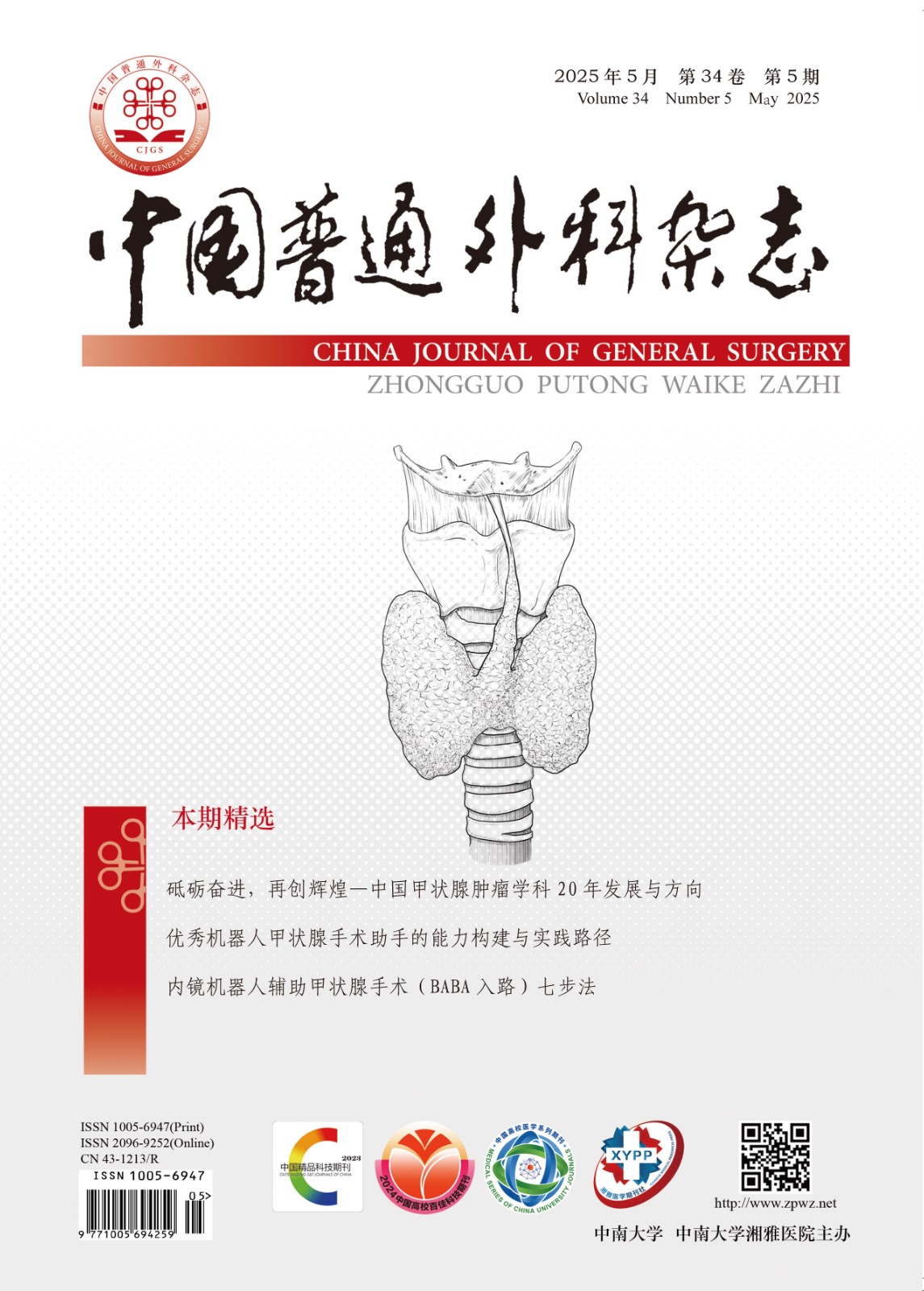Abstract:Since the first endoscopic thyroidectomy by a gasless unilateral axillary approach (GUA-ET) conducted in South Korea in 2003, it has now been 20 years. This is a cosmetic and minimally invasive surgical procedure for thyroidectomy. Due to the incision hidden in the axillary skin lines, there is no need to cut the skin, platysma muscle, and neck white line, ensuring the integrity of the neck skin, platysma muscle, sternothyroid muscle, and neck midline. This avoids complications such as neck scars and swallowing dysfunction, thus achieving cosmetic effects. Additionally, the surgical space is established in the natural fascial gap between the skin under the clavicle and the clavicular part of the pectoralis major muscle, and between the clavicular part of the sternocleidomastoid muscle and the sternum, without cutting normal tissue structures such as muscles. Although it appears to be a remote surgery, it actually achieves the goal of minimally invasive surgery. However, due to remote operation, the leverage effect of surgical instruments in the clavicular head region, the internal suction device outside the retractor, and other factors lead to a reduction in the vertical space of the surgery. This results in less-than-ideal suspension of the thyroid, causing unclear exposure of the recurrent laryngeal nerve, and incomplete clearance of lymph nodes in the central region posterior to the thymus or VIB region. At the same time, structures such as the tributaries of the external jugular vein, supraclavicular nerve, carotid vascular sheath, and middle thyroid vein are necessary pathways for establishing space, making it prone to complications such as bleeding and nerve damage. Moreover, contralateral procedures and the close fusion of certain portions of the sternocleidomastoid muscle with the sternal tendon increase the surgical complexity. Therefore, based on the above factors, the surgical quality control and safety of this procedure have been questioned by some peers. Nevertheless, since Professor Zheng Chuanming introduced this technique to China in 2017, this procedure has been widely adopted by many domestic medical institutions within just 7 years. It has received high recognition from many physicians engaged in thyroid surgery, and in 2022, the first domestic expert consensus in this field was released, making the promotion of this procedure more standardized and feasible. It is evident that as the technique matures, the advantages of this procedure gradually become apparent. It avoids the complications such as the keloid scar in the neck and neck joint movement after traditional neck incision, and numbness around the lips after oral procedures. Compared to the most mature thoracic/breast approach in our country, the unilateral VI region lymph node dissection as well as exposure and protection of the recurrent laryngeal nerve become easier. Without a doubt, strict control of surgical indications, adherence to the principles of "cure the disease first, protect function second, and consider cosmetic appearance third" in tumor treatment, and effective control of surgical quality and safety management are necessary for the scientific and standardized promotion of this procedure. It may even lead to continuous expansion of the indications for this procedure in thyroid surgery. This article, combining literature reports and the experience in equipment improvement and detail management of the authors' team, elaborates on the quality control and safety management of this procedure.







































































